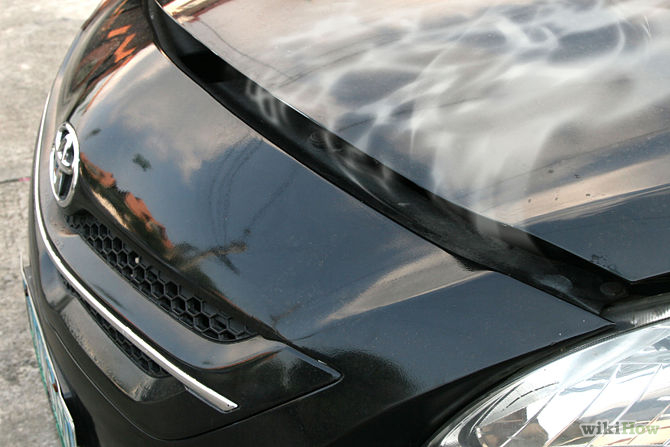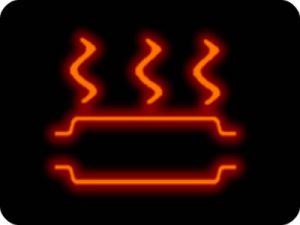How to Stop an Engine from Overheating
If your car’s cooling system is not working properly, heat can destroy your car’s engine. If you notice your car starting to overheat, taking the following steps can help prevent harm to your vehicle until you can repair your cooling system. What to Do If It’s Safe to Stop the Car
Pull over. As soon as you notice the temperature gauge creeping into the “H” territory (which stands for “hot”), pull over and turn off your car to allow the engine to cool. Be extra aware of the temperature gauge on hot days.
If you start to see steam emanating from your hood, stop immediately. You may, however, be able to keep an eye on your temperature gauge to prevent serious steam from escaping in the first place.
Open the hood to allow heat to disperse faster. Don’t keep all that heat bundled up there. Find the little latch underneath the hood and open the hood. Be aware that some cars have safety latches close to radiator cap and there is a risk of getting burned if steam is coming from radiator cap.
Do not open your radiator pressure cap (the cap on top of the radiator) while the engine is hot. Doing so is very likely to release a high pressure combination of steam and radiator fluid that can cause very serious burns.
Check the coolant reservoir tank and fill if needed. Most modern cars have a plastic reservoir of coolant connected to the top of the radiator. This will allow you to see if your coolant is low. Many have marks indicating the proper level of coolant, below which the engine is in danger of becoming too hot. Check to see if the coolant is at or below that level.
Add coolant (or water, in a pinch) to your reservoir to the full/hot line. On most cars, you can add liquid to your reservoir even if the car is hot. Check the owner’s manual to be sure, or wait for the car to cool before opening.
If your car only has a radiator and no coolant reservoir, you must wait for it to cool before checking the level of coolant.
Look for a leak in the cooling system. If your radiator or cylinder head seem to be compromised, or if you open the coolant reservoir and the levels are topped up, you may have a leak in the cooling system. If you’re experienced with cars, check the radiator, core plugs in the engine block, or cylinder head near the head gasket for any signs of leakage.
If you don’t know your way around cars, consider bringing your car to the nearest mechanic and ask them to pressure-test the cooling system. Pressure-testing the cooling system is relatively easy to do; you may even get it free of charge.
Determine whether to drive on or call for help. If the car was simply low on coolant and you were able to refill it, it may be safe to drive on. Follow the instructions below for how to minimize the risk of overheating if you do so.
If the car appears to be out of coolant entirely, do not drive it. You can quickly cause severe harm to your engine by doing so.
If help is readily available, you may be better off calling for a TOW TRUCK than driving the car.
If no help is available or conditions are otherwise unsafe you may need to drive on regardless of whether you were able to solve the problems. Read below for how to manage your car if this is the case
What to Do If You Must Drive the Car:-
Turn the air conditioning off. If your car has air conditioning, turn it off. Air-conditioning puts a load on the engine that you want to avoid right now.
Use the heater to disperse engine heat. It may sound crazy, but it actually works. Flip the climate controls to vent, turn the heater all the way up, and turn the fan all the way up. If the weather is hot, the inside of the car will heat up quite a lot. Point the vents out the WINDOWS as much as possible to help reduce the temperature.
Why this works: The heater in your car uses engine heat to warm air in the cabin. Running your heater full blast takes a significant amount of heat away from the engine, making it significantly cooler.
Keep a close eye on the temperature gauge or light. Pull over and turn off the engine if you have to. Remember that if your car overheats too much, it will ruin the engine.
Turn off your engine (under certain circumstances), but flip your key back into “ignition” as soon as it stops. Engine will shut down, but both radiator FAN AND BLOWER will keep cooling down coolant. Do this only if you are sitting in traffic or stopped at a light and not moving for more than a minute. Keep a lookout ahead for when the traffic will move and turn your engine on before that point.
Keep it steady in stop and go traffic. It is better to move at a steady SLOW pace than to go fast, stop, go fast stop, etc. Accelerating quickly and then riding the break will increase the load put on the engine, causing it to work overtime.
Generally, people will not cut you off in stop and go traffic since everyone is stuck in the same situation. Either way, you probably want to be more worried about your engine overheating than someone getting in ahead of you.
Try this trick to draw more air through the radiator. If your vehicle has a belt-driven radiator fan (usually rear wheel drive and four wheel drive vehicles) and you are stuck in traffic, place the transmission in neutral or park, and smoothly increase the engine speed to 2000 RPMs. Hold the RPM there for a minute or so. This will increase the speed of the engine, and in turn, turn the water pump and radiator fan faster. This will draw more air through the radiator to dissipate the heat. If your car has electric fans (typically front-wheel-drive vehicles), this method will not work for you.
Wait out rush hour traffic. Pull over if you think your car will break down in stop and go traffic. Turn off the engine and wait for the traffic to start moving normally. Once the traffic starts flowing again, it is better for you to drive faster than slower as more air will come in and cool your engine





Leave a Reply